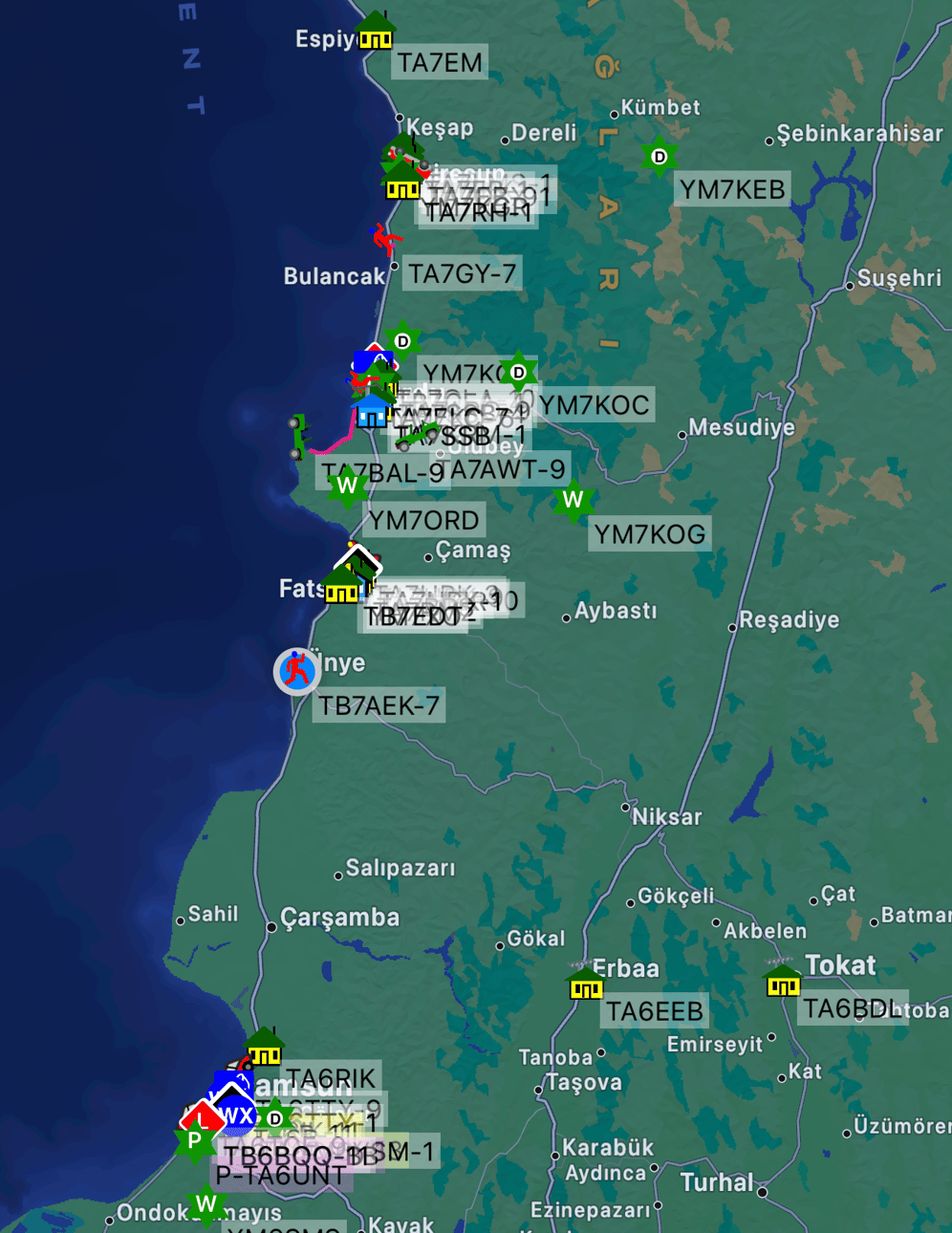📡 What is APRS?
My Experience with APRS: Real-Time Tracking and Data Over Radio
AYBERK BLOG
My Experience with APRS: Real-Time Tracking and Data Over Radio
By Ayberk Korkmaz – Electrical & Electronics Engineer | Amateur Radio Operator TB7AEK | Broadcast Technologies Specialist
Amateur radio is far more than just voice communication. Digital modes, data transmission, and location-based communication open up a whole new world of discovery and utility. One of the most fascinating areas for me has been APRS, the Automatic Packet Reporting System.
APRS allows radio operators to transmit location, weather, messages, telemetry, and other short data bursts over the airwaves, often using GPS-equipped devices or software integrations. While it's not yet widely used in Turkey, it’s an incredibly useful tool among hikers, mobile stations, and emergency operators.
📡 What is APRS?
APRS was developed in the late 1980s by Bob Bruninga (WB4APR) and uses digital data encoded as audio signals over analog VHF/UHF radio—most commonly at 144.800 MHz.
Key use cases include:
Tracking mobile or fixed stations
Sending short messages
Sharing real-time weather data
Emergency signaling and event coordination
🛠️ My APRS Setup
My APRS experience includes both mobile operations and base station setups. Some of the tools and devices I use:
Yaesu FT-70D + APRS Tracker module (external data integration)
Software decoding via SDR receivers (Direwolf, YAAC, APRSIS32)
APRSdroid on Android + Bluetooth TNC module
For location, I use either built-in GPS (when available) or smartphone GPS via Bluetooth or USB.
I also connect to the APRS-IS network via iGates to transmit my packets over the internet.
🌍 What Can Be Shared with APRS?
APRS is not just about sharing GPS positions. You can also transmit:
Weather data (with appropriate sensors)
Propagation and coverage analysis
Position tracking for amateur radio events
Temporary repeater locations or alerts
Telemetry simulations for training or experimentation
Personally, I use APRS while mobile to monitor coverage areas, log repeater access, or even exchange short messages with other operators on the move.
🌐 APRS and the Internet: iGates & Digipeaters
Though APRS runs on RF, it integrates smoothly with internet infrastructure.
iGate stations receive RF APRS packets and upload them to the APRS-IS network, making global tracking possible.
Digipeaters help extend the RF range of APRS packets, acting like digital relays to reach broader areas.
You can view this live on websites like aprs.fi.
🎯 Why It Matters
APRS is invaluable for:
Disaster and emergency scenarios
Field operations and search & rescue missions
Ham radio events and on-the-go tracking
It teaches operators the value of real-time RF data communication, bridging the gap between analog radio and the digital world.
🧭 Final Thoughts
APRS is one of the most exciting ways to blend radio with modern technology.
From a simple GPS module and SDR setup, to full iGate stations and weather networks, there’s so much to explore and build.
In my experience, APRS offers a perfect balance of engineering challenge and practical utility, and I hope to see it adopted more widely—especially by younger amateurs looking to innovate and experiment.
📡 See you on the airwaves – with data packets in tow!
🎙️ Ayberk Korkmaz – TB7AEK
www.ayberkkorkmaz.com

